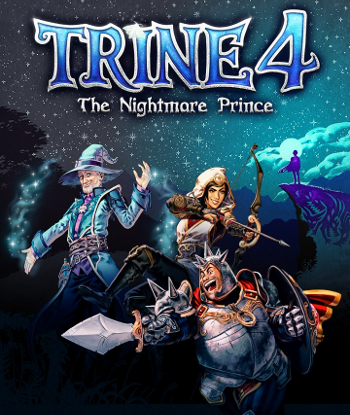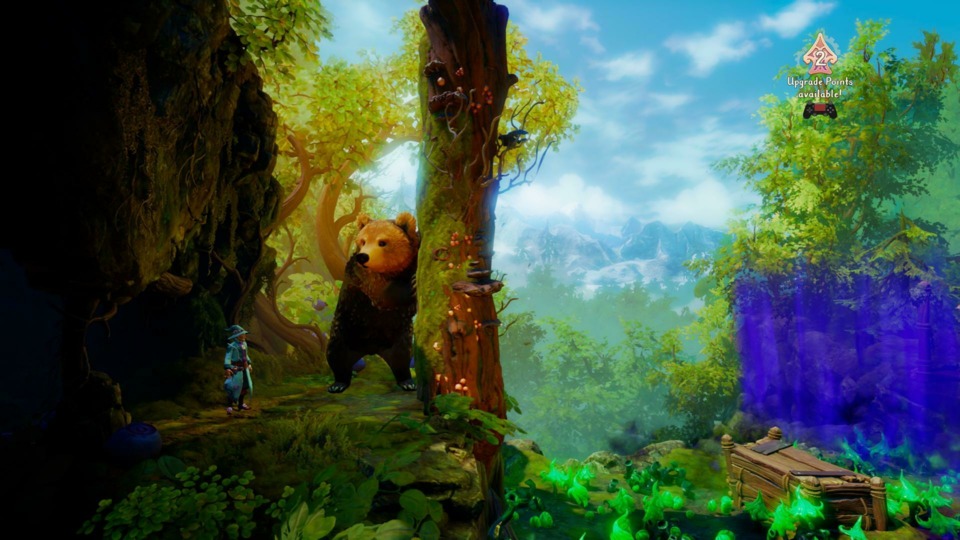Indie Game of the Week 193: Trine 4: The Nightmare Prince
By Mento 0 Comments

After the troubled development and lukewarm reception of Trine 3: The Artifacts of Power, I was slightly anxious that we wouldn't get any more games in this acrobatic puzzle-platformer series. That would be a shame, since while Trine tends to stick to its wheelhouse of box physics and character-switching mechanics this franchise always brings it when it comes to satisfying puzzles and a wonderful and ethereal art direction, and it's something I never mind dipping back into whenever I'm looking through my library for something to play.
Trine 4: The Nightmare Prince is a deliberate return to form for the franchise, dropping the 3D platformer aspirations of its star-crossed predecessor to deliver a game that's... well, a whole lot like Trine 2 and Trine: Enchanted Edition. The level design is strictly 2D, characters gradually learn new powers gradually over the course of the game which are then seamlessly integrated into the player's repertoire of puzzle-solving tools, and the three heroes continue to bounce lines off one another: Amadeus the meek and scholarly wizard, Pontius the honest and unflappable knight, and Zoya the sarcastic and self-serving thief. To add to the puzzle-solving aspect, it feels like Trine 4 introduces so many new game-changing powers that it almost threatens to derail the difficulty curve, but the game's philosophy is a gentle one: these additional powers often serve as alternative solutions, rather than any one instance forcing the player towards a very specific course of action. You could rely on Amadeus's summoned boxes as platforms, Zoya's elemental arrows or new fairy rope (which causes hooked items to start floating upwards), and while Pontius again is given the fewest options for puzzle-solving he is granted a horizontal air-dash "charge" early on that proves very effective at crossing gaps.

Trine's focus on giving the player a good time than scrambling their brains with tough puzzles or frustrating them with overly exact solutions with its frequently-capricious physics extends beyond the level/puzzle design itself. The game's collectibles are numerous and well-hidden, but the game's generous checkpointing system - and a post-level report that tells you what you're missing and where - makes it very simple to jump back in and sweep up those elusive items. If a character dies, they don't stay dead until the player reaches the next checkpoint: instead, they're back in a manner of seconds. The exception to this are the game's little combat encounters, but these are relatively easy and characters can be revived quickly by hanging around where they fell for a few moments. I've never particularly liked Trine's combat - it's far from the highlight - but I tolerated here due to the mix of combat-effective powers and some smart boss design: they're all based on a particular nightmare of one of the trio and they each take their boss on solo, relying on their own specific powers to bring it down.
The story is, as always, kind of whatever, and exists as a protracted excuse for the trio to run across a bunch of picturesque levels kvetching about their newest plight. In this case, they're pursuing the titular royal, who accidentally cursed himself with nightmare-conjuring powers that go on to ravage the countryside. This nightmare power draws its strength from the fears of the locals: this accounts for the trio's bosses, but they'll frequently bump into some new NPC who needs help, who in turn has inadvertently added a new creature to the menagerie of nightmare creatures that the heroes keep fighting. One instance has a pair of bickering neighbors - a badger and a hedgehog - whose respective fears are each other, adding nightmare badgers (very fast) and nightmare hedgehogs (spin around a lot) to subsequent brawls. It's a neat idea and lends itself to some imaginative level design as the trio inevitably find themselves within the realm of nightmares, or at least frequently on the cusp of same, but nothing to really write home about plot-wise.
I'm ultimately a little torn about Trine 4. It's evident that the designers wanted to win back the audience they lost with Trine 3, and so played it safe this time around. However, they may have gone too safe, as the game is almost a carbon copy of the first two in the series with only a handful new powers to set itself apart (as well as the requisite graphical upgrade). The controls are as tight and responsive as they've ever been, or at least as much as they can be with all the chaotic physics involved, and the new batch of quality of life touches are definitely appreciated; don't get me wrong, this is the best Trine has felt in years. Of course, I still have a few technical complaints: having so many abilities can lead to some intuitiveness issues with the many ways it has to map to a finite number of keys (or buttons, since I played the PS4 version), the shortcut indicators for where collectibles are can be misleading (sometimes you need to head forward, up, and then back left to find a collectible, which the game registers as appearing in the previous area), and there's a weird glitch that pops up that I only assume is the game and not my controller where it seems to refuse to move left. Those are minor nitpicks, none of which I can guarantee exist outside the PS4 port, but it made the game feel a little less polished.
My biggest issue is more of a subjective meta one; that it just seems unfortunate for the developers that they felt the need to course-correct so much after sticking their necks out with a big flashy jump to 3D that didn't pan out the way anyone wanted, instead allowing Trine's growth to stagnate by resuming their old habits. Hopefully, by resetting history and re-establishing the franchise's virtues with this strong but safe entry, they might once again have the confidence to try something risky and different with Trine 5. (NB: I played this game entirely solo, so take that perspective into consideration when reading this review. I don't doubt that this game would feel very different with three players, especially as you'd need to solve puzzles in such a manner that all three could proceed.)
Rating: 4 out of 5.
| < Back to 192: Knightmare Tower | The First 100 | > Forward to 194: Milkmaid of the Milky Way |
